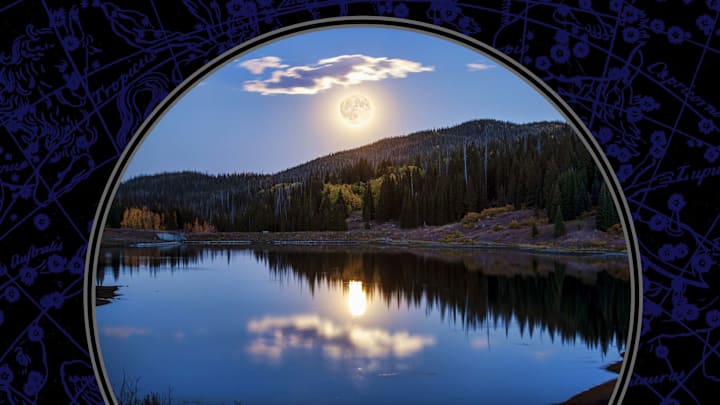The dog days of summer are gearing up to be an especially exciting time in the night sky: two super moons will light up the heavens in August 2023. Backyard astronomers will be able to catch the full sturgeon moon at the beginning of the month, while an unusual blue super moon will rise 30 days later. They’ll be the second and third of this year’s four super moons on the astrological calendar. Here’s what you need to know.
When Are August’s Full Moons?
As The Old Farmer’s Almanac reports, August’s first full moon will reach its peak at 2:32 p.m. EST on Tuesday, August 1. If that’s daytime where you live, you’ll have to wait for the sun to set that night. You should be able to see it on the night of July 31 as well.
The super blue moon will peak on August 30 at 9:36 p.m. EST—and no, it won’t actually look blue. The term blue moon describes the second full moon to appear in a calendar month, which occurs once every two to three years.
What is a Super Moon?
A super moon occurs when the moon reaches perigee, the point in its orbit when it’s closest to Earth, at the same time the moon is in its full phase. At perigee, our moon is an average distance of 226,000 miles from Earth. (The moon’s farthest point, called apogee, is roughly 253,000 miles away from Earth.) As a result of its proximity, the moon appears especially bright and about 7 percent larger than a normal full moon. Compared to a full moon at apogee (a.k.a. a micromoon), it looks 14 percent larger.
Why Is It Called a Sturgeon Moon?

Each month’s full moon has a nickname (or multiple nicknames), usually of folk origin, that coincides with certain plant, animal, or weather activity common at that time of year. Since people caught an abundance of sturgeon—a large freshwater fish that’s been around since the Mesozoic era—in the Great Lakes and Lake Champlain during this part of summer, they started calling August’s full moon the sturgeon moon. It has a few lesser-known monikers, too, including the Cree “flying up moon” (a nod to young birds fledging from their nests), and the “ricing moon,” an Anishinaabe nickname marking the wild rice harvest.
A version of this story ran in 2020; it has been updated for 2023.
